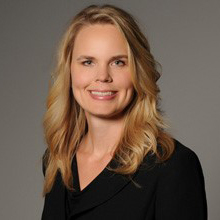
Sandra Fancher
October 14, 2024
Are you a school where almost every program wants marketing to promote them, yet that isn’t feasible within your budget? As a marketing team, how do you increase awareness of your programs and allocate budget?
That’s exactly what Bianca Myers, Ph.D., Executive Dean of Advancement at Indian Hills Community College, and I discussed at the NCMPR district 5 conference.
A little over a year ago, Indian Hills came to Stamats for an overhaul of their advertising strategy. We first made sure we understood the messaging, audience, and market parameters. Indian Hills is a relatively small school in a rural area and was experiencing declining enrollment. About 98% of their student population was local, and 12% were over the age of 23. About 70% of their students were enrolled in career and technical education programs, with 30% enrolled in arts and science programs.
A full audit of the current strategy showed us quick wins and optimization opportunities. Before working with Stamats, Indian Hills had a mostly brand-focused campaign approach, with 80% of their budget going to people who already knew of them. After gaining a deeper understanding of their campaign, we applied the ten insights discussed at the NCMPR 5 presentation.
Analyze your search terms. What percentage of your advertising search terms did the user include your college names? It’s easier to get traffic from people who are searching “Indian Hills welding classes,” but harder to get hits from non-branded search terms like “welding classes near me.” But non-branded searchers are who you should be focusing on. Together, Dr. Myers and my team at Stamats refocused the ad spend from 80% branded search to 80% non-branded search.
The landing page is where the conversion work is done. Google also rewards your campaign with lower ad costs if the search and the landing page align. Initially, Indian Hills had generic pages for all the ads. In the first few months, we went from a generic brand landing page to tailored landing pages about welding, associate nursing degrees, industrial maintenance, and more.
What is an actual conversion? During our audits, we have seen soft conversions, such as viewing a program page. Stamats has a high standard of what we consider a conversion. For Indian Hills, we defined it as:
NOTE: This might mean that your conversions go down. Now you are only counting “real” conversions, your numbers are more realistic. That extra padding is gone. Dr. Myers shared how she prepared leadership that we are now ROI-focused and no longer counting general interest.
With so many programs, it can be hard to know exactly what needs an advertising boost. Stamats created a decision tree to help colleges like Indian Hills allocate their advertising budget. Run each program you have through the decision tree to decide what action to take next, whether it’s paid search ads, market analysis, thought leadership, and more.
If you’re dividing your advertising budget by 12 and prescribing the same amount to every month, you’re not being effective. Instead, increase your ad spend during months with deadlines, such as class registration and application deadlines, and decrease your ad spend during the more low-key months.
Deadlines help spur action. Indian Hills and Stamats worked together to drive conversions with deadline-driven marketing. Campaign landing pages should also prominently feature deadlines and become part of the overall strategy.
On average, a visitor comes to the site seven times before they convert. Their journey includes a mix of paid and organic. The organic program pages play a key role and must be robust to support and optimize the conversion process. Your program pages are your key selling page. They should not be catalog data-focused. That detail is saved for later visits. First, you must convince them that your program is a good fit for them.
Before the program page updates, it took an average of seven days and five site visits to convert. After content updates, it only took four days and three site visits to convert.
Let’s say someone is browsing Instagram and sees an interesting video showcasing an Indian Hills student story. They click the link for more. They suddenly see a text-heavy page. Guess what? They will most likely bounce. Stats show the average time on site after clicking an Instagram or TikTok ad is three seconds.
Our recent optimizations created a continuation of their video and interactive experience with a mobile-optimized, video-heavy landing page.
Sometimes students are not able to come onsite for a tour, especially international students. But a tour is a great opportunity to tell more about life on campus.
During our interviews, coaches shared PowerPoints they created to showcase the culture, student life, dorm life, and opportunities. We recreated that experience with a Virtual Campus Experience. After funding a 360 virtual tour for years, reallocating those dollars to a one-time expense freed up budget for other marketing.
The Virtual Campus Experience mimics a campus tour with a greeting by the Director of Admissions, video tours, interviews with students and faculty, campus highlights, and a “day in the life” information about their students.
Not only did it save marketing costs, it’s very easy to update!
In order to have a robust digital marketing strategy, you need to expect adjustments. Make a plan and then reevaluate each and every month. Digital properties change, competitors change, and environmental activities change.
For Indian Hills Community College, these ten insights had an enormous effect. Clicks-to-apply skyrocketed by over 95%. For institutions following these insights, clicks and impressions may go down initially, but the high-quality conversions that lead to applications will increase.
We challenged our audience with these three insights:
By focusing on results, such as enrollment numbers, and learning and adjusting, you can achieve the success that Indian Hills Community College and Stamats found together. If you would like to talk more about our presentation, please email me to schedule a time to discuss.